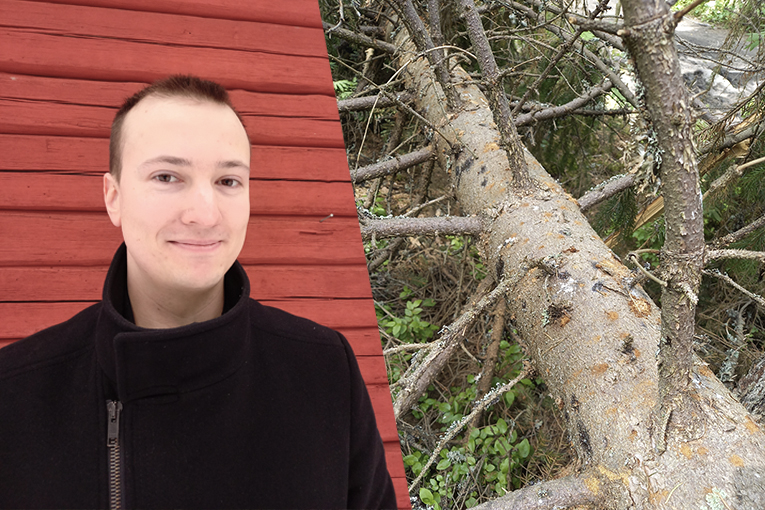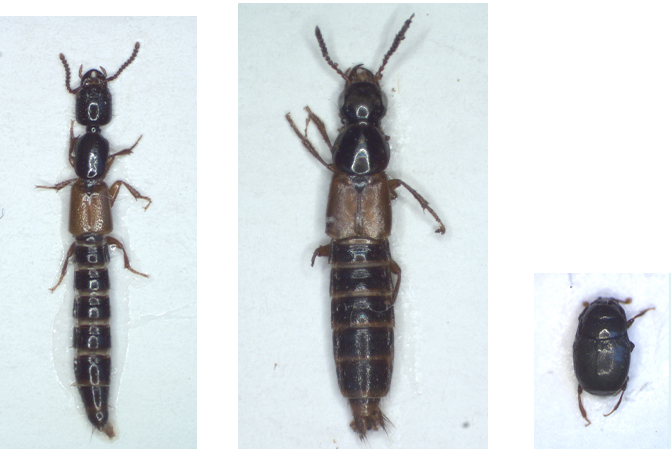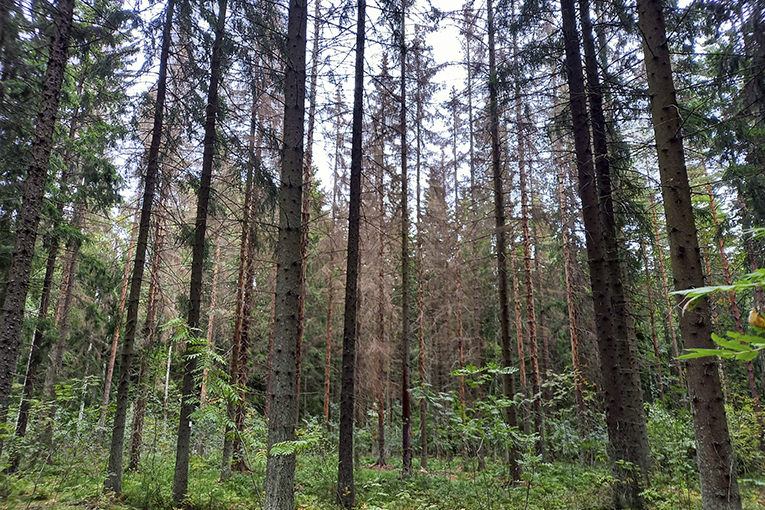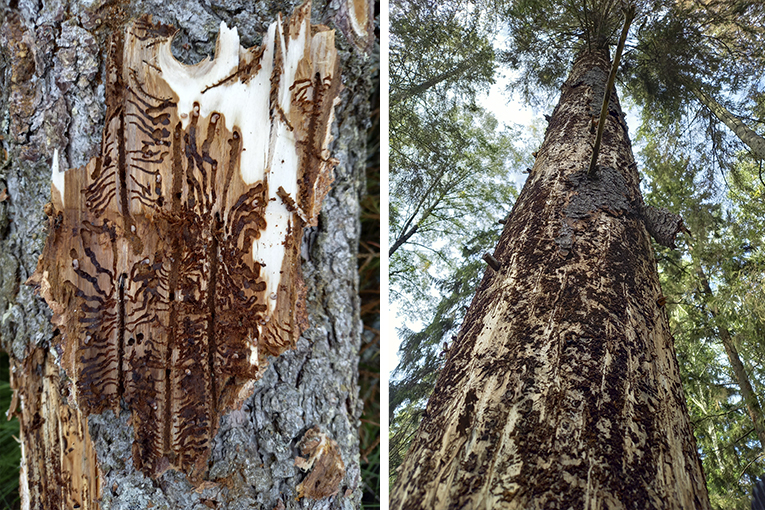
Damage caused by the European spruce bark beetle might be prevented by using its natural enemies, in Finland and soon also in Central Europe, says doctoral researcher Mikko Pelto-Arvo from the University of Helsinki.
Using the natural enemies of the European spruce bark beetle could help reduce the populations of this forest-damaging beetle (whose Finnish name means ”printer beetle”) before they manage to cause extensive damage, says Mikko Pelto-Arvo, doctoral researcher at the University of Helsinki.
The best results can be obtained by combining biological pest control with good forest management.
The natural enemies of the spruce bark beetle include, according to Pelto-Arvo, particularly the predatory beetles and parasitoid wasps he is studying, even though the Eurasian three-toed woodpecker and the black woodpecker can also curb beginning damage.

Pelto-Arvo’s hypothesis is that the insects dangerous to the spruce bark beetle are more numerous in a favourable environment. This means that they can mount a more effective attack at an early stage, when the spruce bark beetle population begins to increase.
’The enemies won’t pop up out of nowhere,’ Pelto-Arvo says.
According to the Finnish Forest Centre, over 6,000 hectares of forest was felled in Finland last year because of insect damage. The frequency of these fellings is increasing. In Germany and the Czech Republic, the spruce bark beetle has destroyed enormous forest areas in recent years, causing havoc on the timber market. Factors underlying this are drought and long spells of hot weather.

The European spruce bark beetle is about five millimetres long and dark brown in colour. As is revealed by the name, it lives on spruce. It reproduces mainly in trees felled by storm, piles of spruce logs and spruce stands in poor condition. If the population is large enough, the beetle may also infest live trees.
Predator population must be large enough
Pelto-Arvo hopes that owners would not keep their forest too ’clean’; rather, the natural interaction processes in a forest should be included when planning measures of good forest management.
’If every single branch and twig is removed from the forest during thinning, the continuum required by the predator will be disrupted,’ Pelto-Arvo explains.
It is advantageous to leave a mix of tree species in the forest during thinning. All dead trees that do not attract the spruce bark beetle should also be left in the forest during fellings.

This will help keep the populations of predator beetles and parasitoid wasps on a sufficient level.
’Predators such as the ant beetle are capable of travelling quite a long distance in search of spruce bark beetles, but if there are no enemies in a forest area, the spruce bark beetle will have a field day before enough enemies arrive or manage to reproduce,’ Pelto-Arvo says.
Newly dead trees must be removed
For Pelto-Arvo, the perfect situation would be a compromise where trees that attract the spruce bark beetle, that is, newly dead and weakened trees, are removed if there are plenty of them due to abiotic disturbances. Abiotic disturbances are caused by inanimate environmental factors, such as storm damage and drought.
In the long term, however, the presence of some deadwood and a mix of species in the forest must be accepted.

’Many natural enemies of the spruce bark beetle are generalists. If there are no spruce bark beetles, they can subsist on other prey. The continuum required by them is ensured when other prey can be found in deadwood or other tree species. Ant beetles, for example, could feed on Tomicus beetles living on pine,’ Pelto-Arvo explains.
Many natural enemies of the spruce bark beetle are generalists. If there are no spruce bark beetles, they can subsist on other prey.
In Pelto-Arvo’s opinion, the essential thing is to maintain forest conditions favourable for the enemies of pests, enabling them to keep the populations of bark beetles low. In addition, the tree stands must be healthy and able resist infestation.
’The very first thing is to have the appropriate tree species on each site. If spruce is grown on sites that are too dry or poor, for example, the trees will be stressed and provide a breeding ground for the spruce bark beetle, and successive pest generations will multiply and attack even healthy trees in adjacent plots,’ Pelto-Arvo says.
’Deadwood is not a risk’
Pelto-Arvo’s main message to forest owners is that deadwood does not invariably constitute a risk for the spreading of the spruce bark beetle. The beetle normally only feeds on the inner bark of a given tree for one summer, and in infrequent cases for only a few years, before the edible layer runs out or becomes too dry for the larvae to use.
You might want to maximise the benefit from your forest by fetching all standing dead trees for firewood, but that may be bad news for the natural enemies of bark beetles.
’By the time the tree has no bark left it will be completely useless for the spruce bark beetle, and much more use for other forest organisms to feed on. You might want to maximise the benefit from your forest by fetching all standing dead trees for firewood, but that may be bad news for the natural enemies of bark beetles,’ Pelto-Arvo points out.

If the decision is to fight the spruce bark beetle by felling trees, what should be felled are all trees with a green crown and fresh brown dust left by the beetles at the base. Similarly, abundant thin stripes of resin on the trunk are a sign of infestation.
As long as the resin is running, the tree is still capable of defending itself to some extent. By the time you find bark dust, the resin defence has failed and there’s nothing more to be done.
’As long as the resin is running, the tree is still capable of defending itself to some extent. By the time you find bark dust, the resin defence has failed and there’s nothing more to be done,’ Pelto-Arvo describes.
Nevertheless, Pelto-Arvo says that it is no use fighting the spruce bark beetle by bringing in quantities of useful predators into the forest, in the same way as is done in biological pest control in greenhouses.
’It is not practicable to cultivate enemy species for releasing into the forest. Active measures like this are too expensive on a year-to-year basis, taking into account that the silvicultural cycle goes on for decades,’ Pelto-Arvo says.
Range of species in Central Europe is broader
A direct comparison of Finnish and Central European forests is not possible. In Central Europe there are many more species in forests and a higher annual temperature sum. Pelto-Arvo says that there are spruce forests in Central Europe where the natural enemies of the spruce bark beetle behave in the same way as they do further north. That damage by the spruce bark beetle has increased in Central Europe is linked to climate change.

’If the change becomes permanent and the trees continue to suffer this badly from stress brought on by drought, it’s likely that cultivating other tree species will have to be considered in Europe. Similarly, in southern Finland it will become necessary to ponder whether it wouldn’t make sense to increase the share of birch and mixed forests,’ Pelto-Arvo muses.
